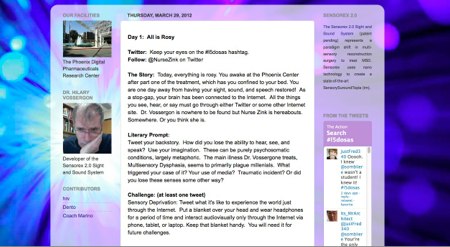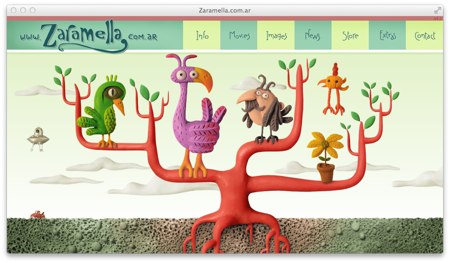Kate Pullinger suggests that we might have things backwards when we talk about the shelf life of digital works and the permanence of print.
In traditional publishing terms, I’m a classic mid-list literary fiction author. At this stage in my career, I’ve written a lot of books, and many of them are no longer in print. The exception to this is my most recent novel, The Mistress of Nothing; the fate of this book was transformed when it won the GG in 2009, Canada’s Governor General’s Award for Fiction. […] But even now, with several translations yet to appear, this book is fading from the market; it will doubtless have greater longevity than anything else I’ve written, because of the prize, but - unless of course the movie gets made - it will have a placid, quiet, life.
[…]
But the opposite is true of several of my digital fictions, and the powerhouse in this field is, as mentioned earlier, Inanimate Alice. IA has not published any new episodes (there are four existing, out of a projected ten) for several years now, well before The Mistress of Nothing first came out. However, the audience for this digital fiction, about a girl growing up in the near future, surrounded by technology, continues to grow and grow.
These are interesting points. Pullinger credits Inanimate Alice’s publisher and its popularity as a teaching tool for children. Whatever the reason, we can always use more thoughtful new media — and more criticism.
Over at the New Media Writing Forum, Andy Campbell started a wonderful discussion in response to my recent post on Scott Rettberg’s history of the ELO. Campbell rightly worries that eLit will not “evolve […] without being exposed to an audience outside of academia.” It’s a legitimate concern, and other eLit writers Christine Wilkes and Alan Bigelow have added sound thoughts to the discussion. Bigelow writes
If we have any hope of encouraging our students to read electronic literature outside the classroom, or our young creative writers to try their hand at this kind of "writing," they must see it has a broader audience, with both an aesthetic future and (for the writers) at least some potential for financial gain, either outright or through jobs in related industries. They can not see it primarily as an art practiced, and favored, by those of us in academia: for a new form struggling to gain its larger identity, readership, and practitioners, the academic world, while a necessary part of the overall strategy, is too small.
Academia, though vital for educating and broadening the audience cannot be the whole picture. There’s a lot of work going on out there and a lot of it isn’t getting the “eLit” cred that it should. Still other work is only tangentially related, but really should be part of the discussion. As advanced as we might hope our field is, eLit is still very young and is changing rapidly; we can still learn a lot from other forms. We can and should be looking around to learn from the aesthetics of digital comics or ask what eLit might take away from the publishing practices of the music industry. There is a lot of interesting work going on out there, whether we’re calling it literature or not.
Many people disagreed with my argument that theory is dictating (or replacing) aesthetics. The solution to this debate is simple: it comes down to a lack of writing about craft. We would all like for there to be more eLit works to discuss, but we are desperately lacking good (recent) writing on how to do it. Some writers protest that their work isn’t demonstrating theory; that’s fine! Write about why you chose that strange syntax, that interesting point of view or strange tense.
And we can always use more thoughtful criticism.
One thing is certain: no matter where you stand, these are questions we need to ask and discussions we need to have. Nodding our heads isn’t going to cut it; we need to face the issues head-on and do the work. There is still much real work to be done.
Mark Marino has posted the transcript from his recent Twitter Netprov fiction, “The Last Five Days of Sight and Sound,” written with Rob Wittig. Each day, Marino and Wittig posted a prompt to help keep participants in character and focused on the general arc of the story. The result was impressive.
Some of my favorites:
iTweetErgo_iAm: “@markcmarino @scottrettberg ELECTRIC LIGHT ORCHESTRA?! What I wouldnt give 2 hear mr blue sky! Alas poor earlobes, I knew them well #l5dosas”
(In response to markcmarino: “ELO's @scottrettberg has joined the play in our netprov! #l5dosas Want to join? Check out http://t.co/OxOXxVjV”)
toritaylorz: “uhhh is it still raining? last thing I remember is LA flooding like it was the end of the world...uhh help...? #l5dosas”
Jerome_F_Salas: “Yanno, if we're gonna be blind but we're hooked into the internet, couldn't they give us a stream of our rooms? #3rdPerson #l5dosas”
scottrettberg: “And I was left in this still point, not quite remember the details of the novel, trying to recall the shade of brown of my sandals #l5dosas”
This fabulous talk by mathematician Richard Hamming reminds us to do good research, ask the right questions, and to work hard and effectively. The talk, from 1986, holds 10 takeaway points that are still valid today across disciplines:
- Drop your modesty; admit that you want to do first-class work
- Prepare your mind.
- Age is important.
- Brains are not enough; you also need courage
- Make the best of your working conditions
- Work hard and effectively
- Believe and doubt your hypothesis at the same time.
- Work on important problems in your field.
- Be committed to your problem.
- Work with your door open.
Luminaris, a beautifully choreographed short film by Juan Pablo Zaramella, tells a love story through stunningly beautiful stop-motion. The cinematography is incredible, and the work took almost 2 years to create due to unpredictability of weather and natural movement of shadows.
(The short is currently restricted, but Zaramella’s web site offers excerpts and other interesting work.–ed)
Ian Bogost reviews the latest game from art game studio Thatgamecompany, Journey, arguing that the game reveals the maturation of an artist. Though thatgamecompany's previous artistic successes, Flow and Flower, carried the conversation of art games forward, they exhibit a certain immaturity that is not apparent until viewed in hindsight.
Bogost’s review doesn’t even indulge the possibility that games are not art. We no longer need to argue this, but many reviews of “art games” still nod to the debate. Journey is certainly a beautiful work of art, and the review is superbly written like a thoughtful book review. If only more game reviews were like this.
.




